

collage
Collage is a longtime obsession of mine. There’s something in the combination of wildly disparate images and objects to produce a larger truth that seems alchemical to me. A few months ago I happened upon the work of a collage artist who works under the name Madcollage, and within ten minutes I’d ordered a piece from her. Two weeks later she debuted another piece, and I ordered that one as well. (I hope to acquire one of her originals at some point.) That speaks, I think, to a common language that exists in that place before words and beyond feelings. Looking at her work feels to me as though I’m half-remembering an important dream I once had, as though I might yet remember the message it held. Here are the whys and hows , as Madcollage sees them, of collage. — Emma Alvarez Gibson
Starting my college education in the Escuela de Bellas Artes of La Universidad Complutense in Madrid was my way of formalizing at seventeen what I already knew all along: I was an artist.
While it is still difficult to put into words what makes someone an artist, I had been timidly identifying as one for years. This moment was my coup de grace. There would be no question mark at the end of the sentence anymore.
Until then, I was unable to assertively show it, but like a subterraneous spring, there were times when the undercurrent would breach the surface. I now realize that I have many lovely art related memories of my childhood. They seem to endure over time, drowning out some of the bleaker realities of that period.
I drew and cut, painted, and built artifacts at all hours of the day. I was constantly on the hunt for materials: boxes, bags, ink, bobby pins, toothbrushes, cardboard, rubber bands, colorful wrappers, tempera, nail polish, twine, cloth snippets and tape. Everything was useful.
I got in trouble many times when my mom found out I had used the last drop of her Elnett hairspray to fix a drawing, or when I had cleaned my oily brushes in the bathroom sink. No scolding, however, seemed to deter me. Instead, my desire to do more would grow greater.
My father, who was a writer, had an extensive collection of books. Many of them were art books with gorgeous reproductions. I was fortunate to have access to all of them, and I would look at every picture, dissecting them, soaking up every inch. I pored over work by Gustav Klimt, Paul Klee, Amadeo Modigliani and Pablo Picasso. I would copy their images on construction paper with as much precision as I could muster, and by doing so, I imagined I was absorbing some of their essence by means of a peculiar osmotic process. I was transforming. I was becoming me.
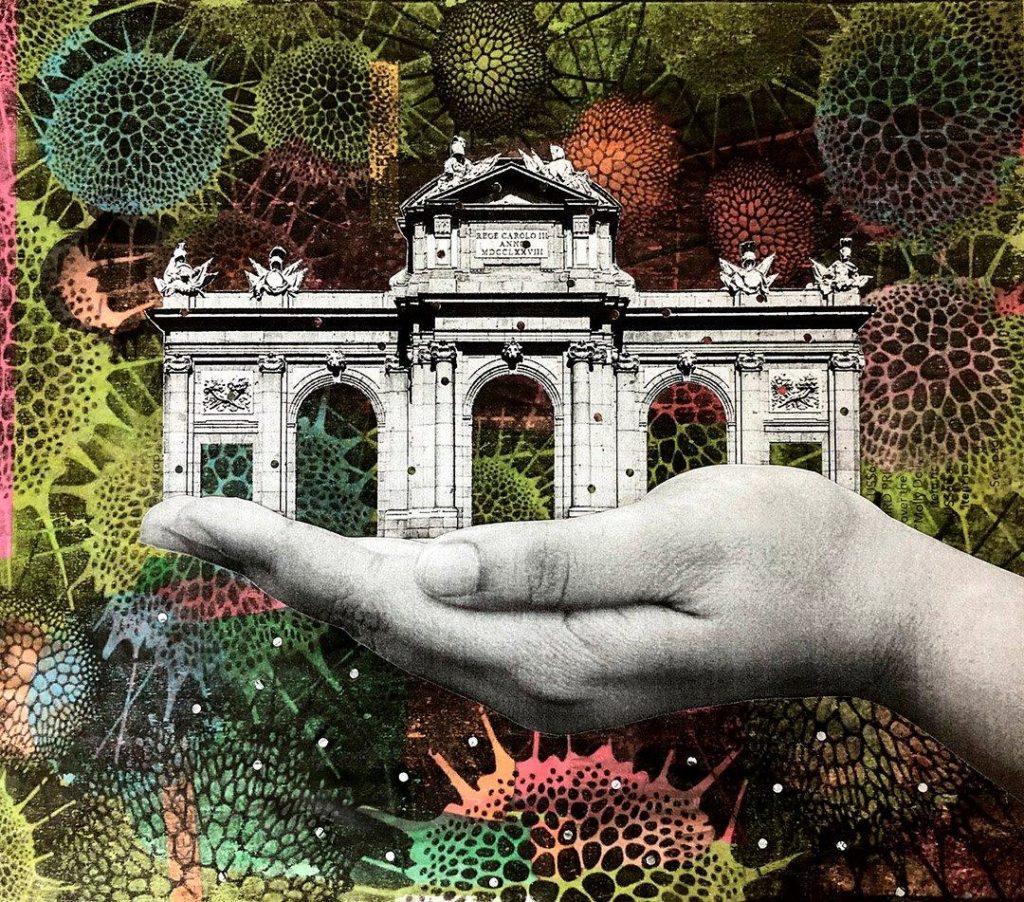
***
Many of my favorite memories revolve around visiting El Museo del Prado with my classmates. It was a compulsory rite of passage for many school children in Madrid. This museum, with its marble floors and wide corridors was breathtaking. I loved the smells, the muffled whispers, the milky light filtering from the skylights. My family never went to church, but this was, I imagined, how it must have felt to be in awe of a sacred space.
Despite our chaperone’s best efforts, I would inevitably break away from the group to go see “my paintings”. I would plan my eventual split every single trip. “I had to go see my paintings” I would explain later to a teacher’s aide on the verge of a nervous collapse. I knew from previous experience that, as elementary students, we would not be shepherd towards the artworks I needed to see. Paintings like Saturn devouring his son by Goya. Rogier Van der Weyden’s The Descent from the Cross. Patinir’s Charon Crossing the Styx. Bosch’s Garden of Earthly Delights. I had seen them in my books, and they were there, looming large and tangible. I was on a secret mission to find them within the vast halls of El Prado.
I was also seeking the freedom to run along those hallways and up and down the staircase at the back of the building on my own. The adventure of meeting the cherubs and naked Rubenesque ladies, the serious men in black with their ruffled collars and piercing eyes, was a terrific thrill that needed to be savored alone. I loved the stunning portraits of royalty and the unsettling battle scenes. I felt sheltered, comfortable within the walls of the museum, and I considered every visit too short for my taste.
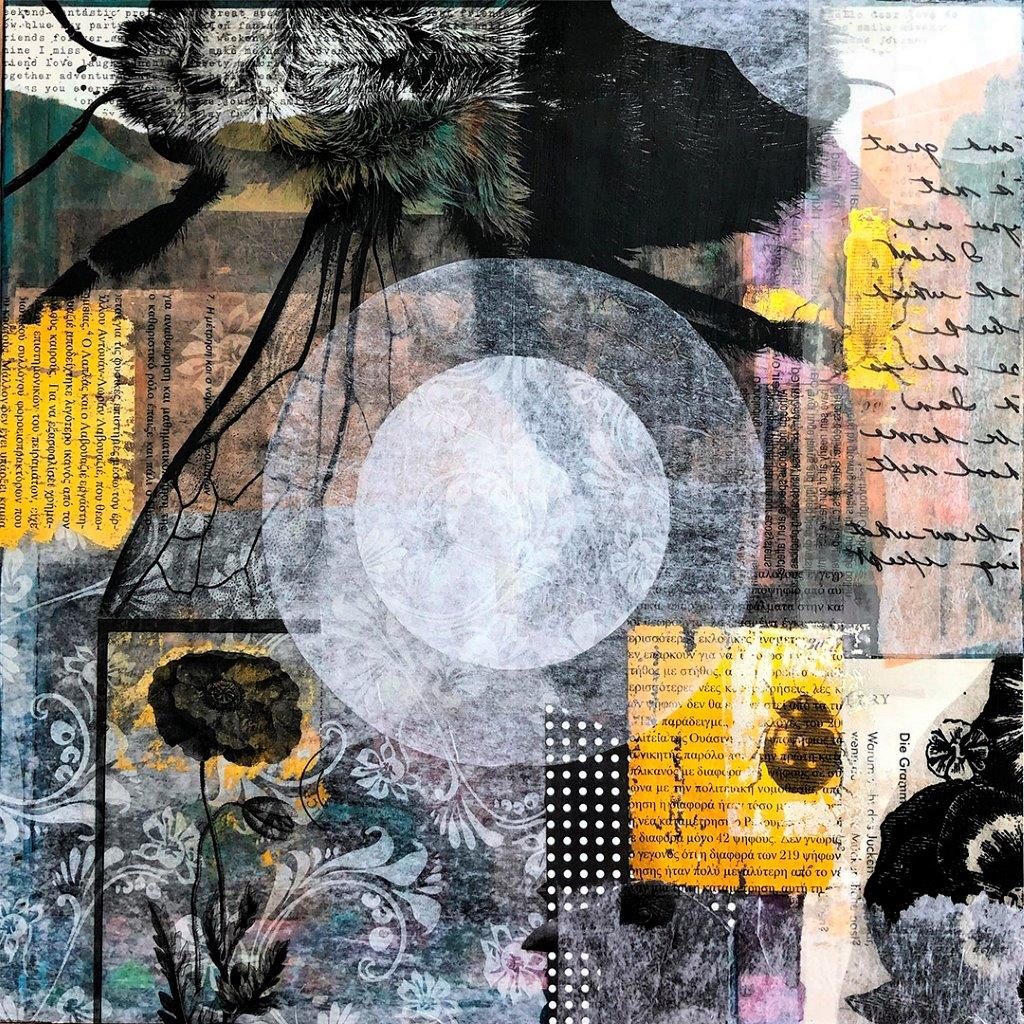
***
My first two years of college were grueling. The focus was on long hours of practice and tiresome chores designed to filter out less capable and apathetic students. It was all about competition. The survival of the artistically fittest.
We had a rigorous training period during which we would draw and sculpt from plaster cast models. Emphasis was put solely on technique. We were to acquire a solid base from which to move onto our personal styles. We mixed our own gesso, our own oil paints, and recycled modeling clay. We learned how to build stretchers and made our own canvases. We worked hard to stay on the saddle, and each assignment was, indeed, a final examination of our potential.
Collage, however, was not even a blip on the curriculum radar yet. Although it was an already established visual language championed by artists like Picasso, Braque, Hannah Hoch, or Max Ernst, we never put it into practice in school. I became acquainted with it overtime, through my own readings and explorations.
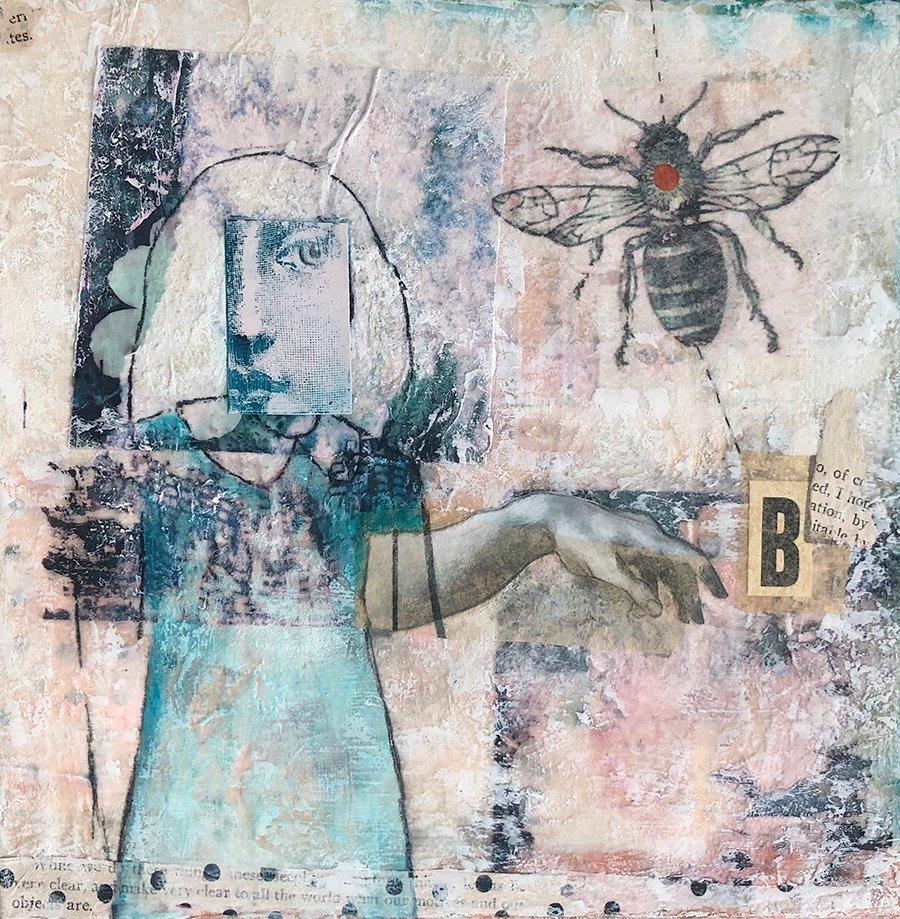
***
When I moved to the United States to finish my degree, I had a disheartening experience in school that changed my life trajectory in unfortunate ways. My first semester, I very hesitantly mixed paper cuttings with pencil drawings for an assignment. My drawing professor was much displeased, probably assuming I was trying to take a “shortcut” of sorts. He did not waste any time in dismissing the work in the cruelest of ways. These rudimentary collages were undoubtedly technically inept, but they did not deserve to be mocked. I was trying to find my feet in more than one way, and I had just attempted something new. Instead of weighing in constructively, he simply snickered and proclaimed in a loud voice, “they look like you”. It wasn’t a compliment, clearly, since I had called them my “Monsters”.
I was inexperienced, uncertain of my new surroundings, and young. I was so hurt and so embarrassed that I stopped showing up for class. The incident left me so full of doubt in my abilities, in the choices I’d made, that from there on I drifted away from art school and became susceptible to the influence of people who did not have my best interest at heart.
Life became disorganized and difficult. A career as an artist seemed like a mirage. Going back home was an admission of defeat. I thought myself an utter failure at what I loved most. I punished myself and spiraled down into depression.
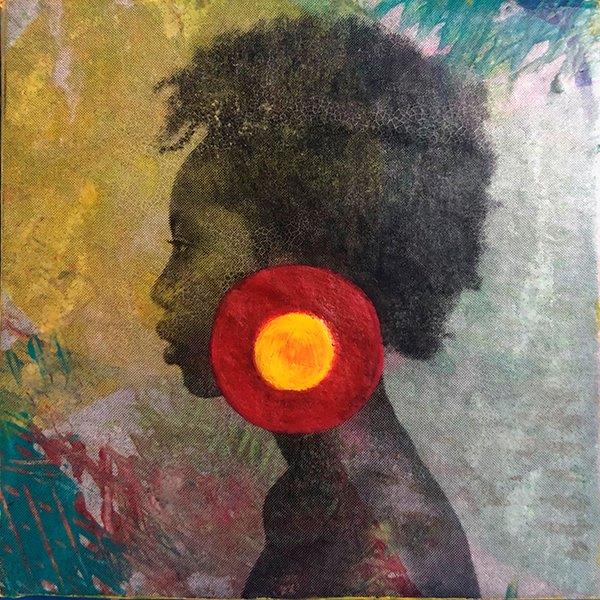
***
After years of heartbreak and illness, that little ember of passion for art turned out to be the straw that kept me afloat. Without conscious effort, it slowly grew hotter until I found myself wondering if it might not be possible to reignite it. To my astonishment, collage was waiting for me like a faithful friend. I started making tiny ones on the backs of notebooks. These diminutive collages accepted all my failures, my sadness, and my long absence. They let me start all over, no questions asked.
Collage slowly carved itself a space in my life without judging me and without asking much in return. Soon, I became reliant on collage to placate my anxiety, and to get through the challenges that life had hurled my way, which were many more than I could have anticipated.
Evidently, to this day, collage does not magically erase my pain. It does not negate any of the hardships, but it has a way of unpacking the suffering. It deconstructs it in ways that I can understand. Collage is a method of reassessment. A creative way of being kind to myself, a skill I was never taught. It has turned out to be a way of finding self-compassion. This period of restoration started twenty years ago, and it is still in progress sparked, in no small part, by collage.
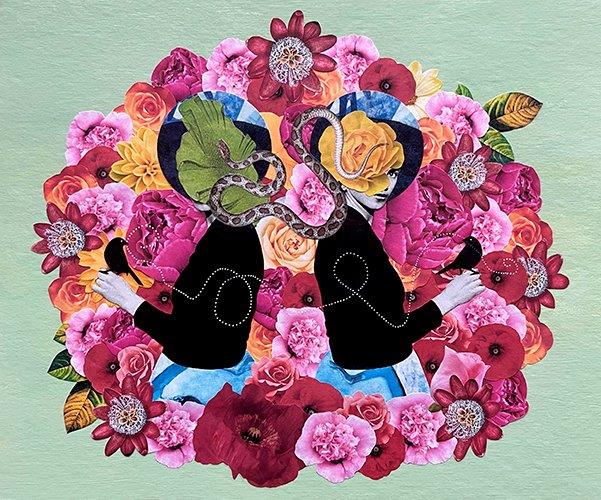
***
During 2020, the year of Covid 19, collage took on an even more essential role in my life. While I always felt somewhat on the fringes and I was an inveterate introvert, the isolation hit me hard. Having collage as an outlet saved my sanity.
I am not being hyperbolic. Many studies show that creative activity dispels rumination, which is a whirlpool of destructive and self-sabotaging thoughts. No matter the magnitude of your fears or the intensity of your worries, research shows quite definitely that engaging in creativity allows you to better mitigate their negative effects. It helps you process the pain, physical or mental, in ways that no other endeavor accomplishes.
I suffer from CPTSD. Getting out of my head is critical to my recovery. When Covid upended my daily routine, and it reverted to my mental landscape, I found myself witnessing a miserable and terrifying carousel of scary thoughts. Collage was able to diminish my tendency to catastrophize because it requires concentration and redirects imagination outwards. Collage creates an oasis where I can refurbish my mind with more playful, gentle thoughts. I’m still holding onto it with a death grip, lest my mind starts playing tricks on itself. I remember that truism “don’t believe everything you think”, which couldn’t be more suitable in my case. Words to survive by.
In this process, I have understood that creativity requires honesty to be therapeutic. Truth is its currency, and no amount of creativity will yield beneficial results if it is approached from a place of deceit. After all, you can only lie to yourself for so long before your mental health starts unraveling. I know because I have been there. It’s my perennial advice to my students that they create based on their true feelings and beliefs, and not because of trends or the latest news.
When people ask me about my collages and where they come from, it is tricky for me to encapsulate a lifetime of effort, learning and setbacks in a few snappy sentences. In short, they are everything that I know how to be: terribly impatient, candid, intense, persistent, different, chronically worried, unyielding, witty, occasionally pliable, frightened, and secretly hopeful. They remain the most useful tool in my arsenal of coping mechanisms.
So, it is my hope that some of my collages connect with viewers in a way that disables their fears too. If there is a true purpose to all this searching, all this cutting and gluing of paper, linking to other people who feel like I do, is the final, most fulfilling raison d’être.



Find out more about Madcollage here.
Shop her prints here.
Shop her original collages here.
Ω
